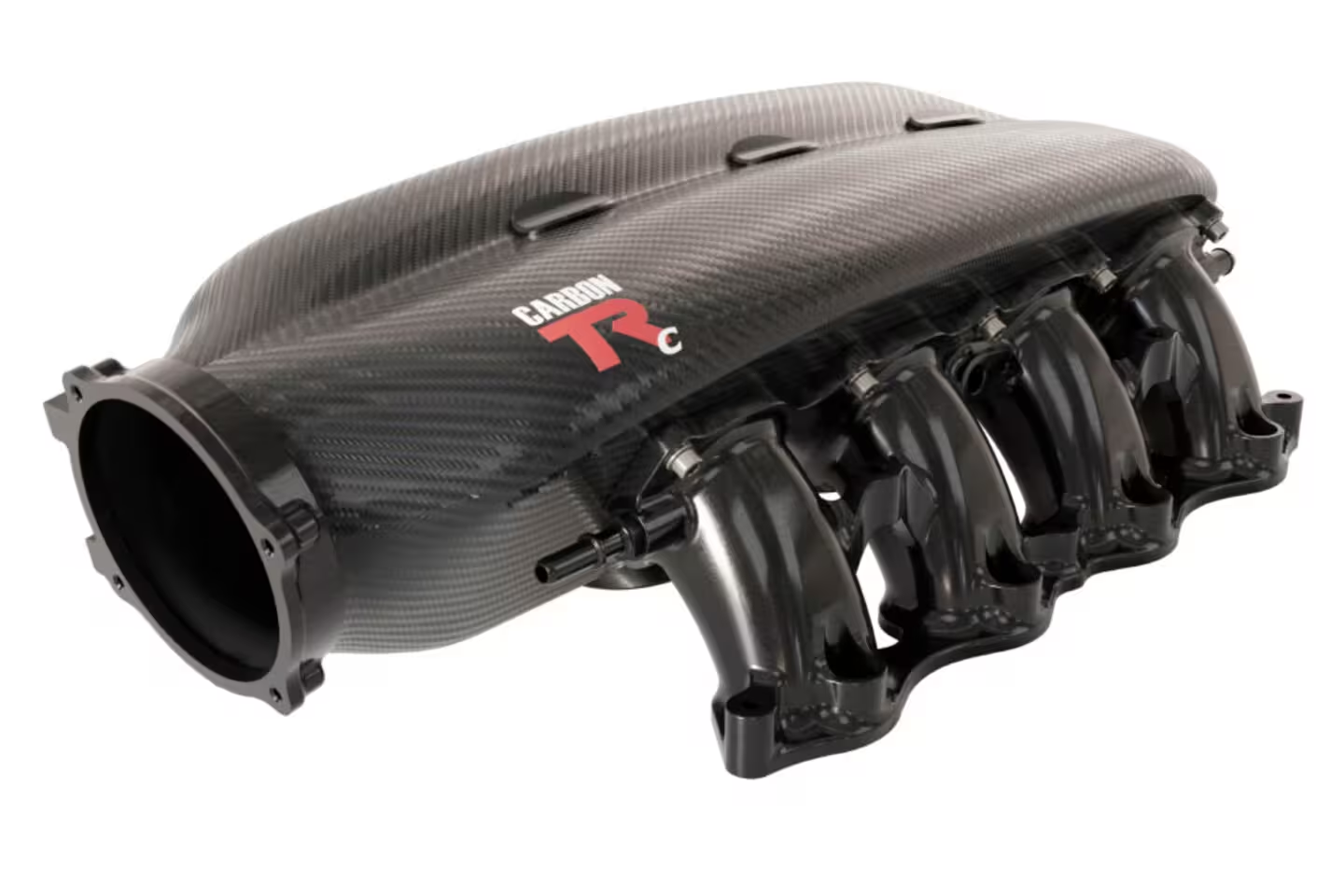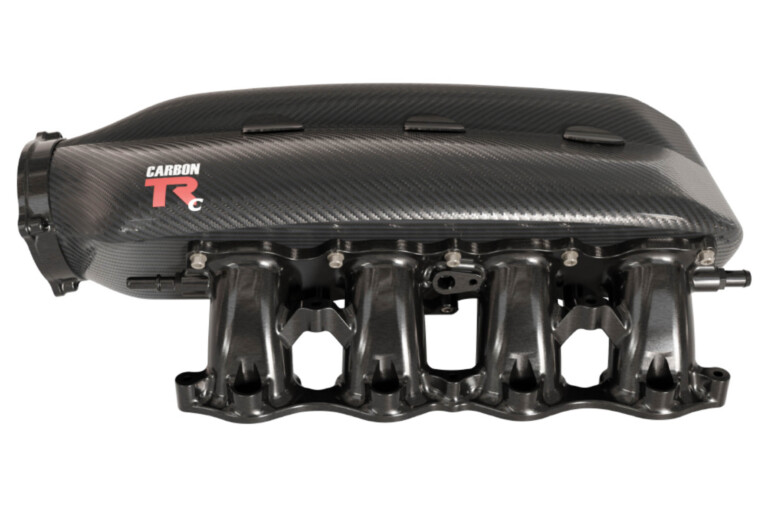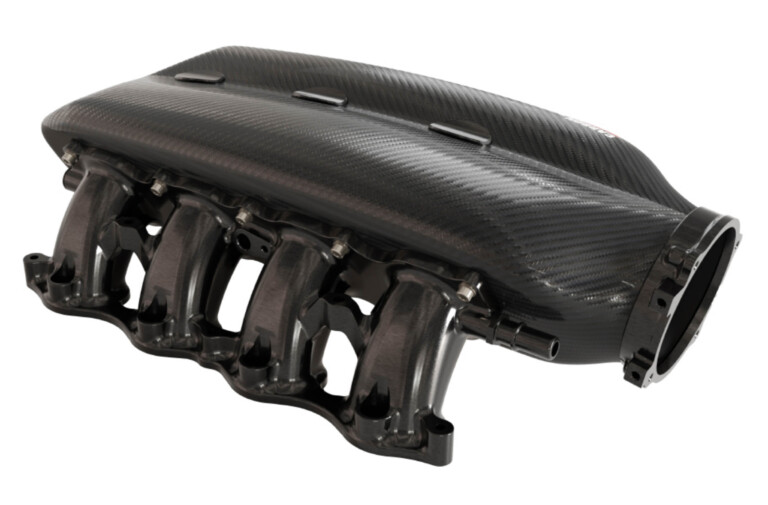Under the hood is where car enthusiasts and racers often showcase the heart of their build. While superchargers and turbochargers may steal the spotlight, the true centerpiece of any V8 engine bay is the intake manifold. Though billet and aluminum units have dominated for decades, Performance Design has introduced a new carbon fiber intake manifold, dubbed the Carbon TRc, specifically engineered for boosted Coyote powerplants.
Ever Evolving Designs
The Carbon TRc is not Performance Design’s first innovation, as the company previously developed both a naturally aspirated intake and an intercooled version, both made from carbon fiber. Engineered to fit under the hood, the short-runner TRc manifold is optimized for boosted applications. However, if fitment and aesthetics are prioritized over peak torque, this manifold can still be an excellent choice for naturally aspirated engines.
While the original Carbon TR featured a V-twill design with a double-bubble upper plenum, the new TRc breaks from tradition with an entirely new construction. The TRc boasts a one-piece molded carbon fiber plenum, created using carbon fiber braided sleeves with alternating weave directions. These sleeves are wrapped around a bladder and pressed into a billet aluminum mold. Resin is then infused, and vacuum and pressure are applied during heating, resulting in a strong, seam-free pressure vessel capable of withstanding over 50 psi of boost.
“The Carbon TRc (Tunnel Ram compact) intake manifold is an evolution of our Carbon TR naturally aspirated and Carbon TRic (intercooled) boosted intake manifolds,” stated Performance Designs. “The new TRc is an under-hood, short runner intake manifold optimized for boost, but does not rule itself out of a naturally aspirated application where fitment and aesthetics are preferred over peak torque.”
Completing the plenum are CNC-machined, anodized 6061-T6 aluminum runners, designed in two pieces to sandwich the plenum. A short velocity stack plate is integrated inside, with the outer runner bank bolting through and sealing securely with O-rings. Additionally, a billet aluminum throttle body flange is bonded to the carbon fiber plenum using aircraft-grade adhesive, while billet aluminum fuel rails are available for both port fuel and direct-injected setups, providing versatility and durability.
Centerpiece Of Any Build
At Ford Muscle, we love seeing innovative technology, especially when it involves composite materials that boost…
Click Here to Read the Full Original Article at DragzineDragzine…



